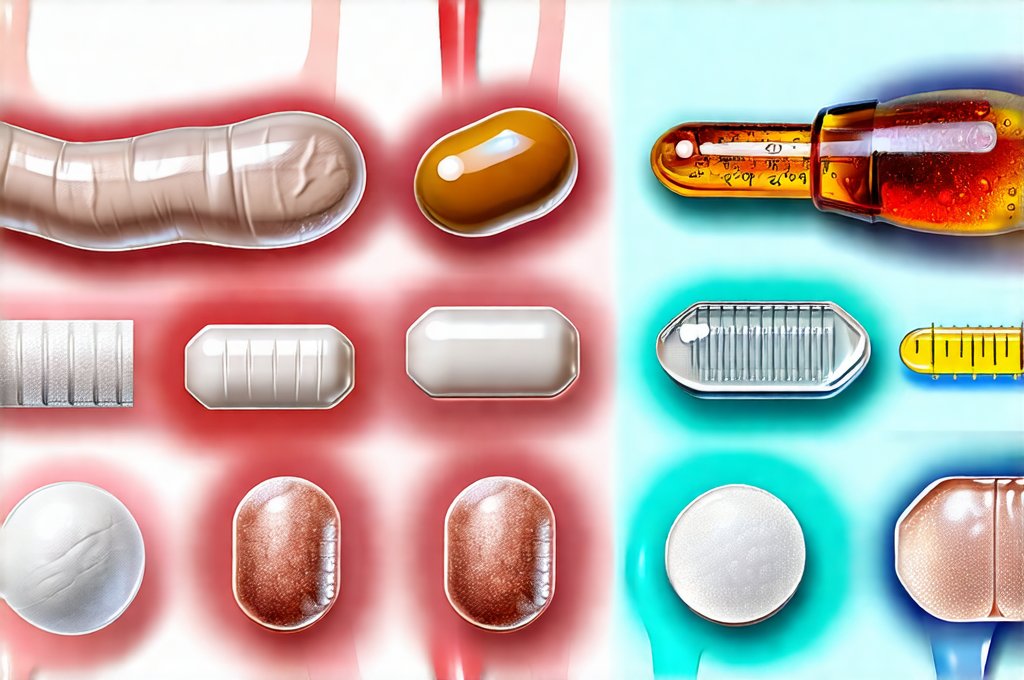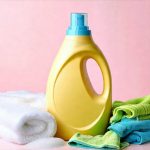Bladder irritation is an incredibly common experience, often manifesting as urgency, frequency, burning sensations, or even incontinence. While many associate these symptoms with infections or underlying medical conditions – which are certainly important to rule out with a healthcare professional – the truth is that everyday products we use without a second thought can frequently contribute to bladder discomfort. These irritants aren’t always obvious; they lurk in seemingly harmless items like soaps, detergents, foods, and even personal care products. Understanding these potential triggers is the first step towards managing symptoms and improving quality of life for those experiencing bladder sensitivity.
The challenge lies in the sheer variety of possible culprits. Our modern environment exposes us to a vast array of chemicals and substances that can impact bladder health. Identifying your specific irritants often requires careful observation, elimination diets, and potentially keeping a detailed symptom diary. It’s crucial to remember that sensitivity varies greatly from person to person – what bothers one individual may have no effect on another. This article will explore some of the most common bladder irritants found in everyday products and offer practical strategies for mitigating their impact, all while emphasizing the importance of consulting with a healthcare provider for proper diagnosis and treatment.
Common Culprits: Identifying Everyday Irritants
Many seemingly innocuous household items contain ingredients that can irritate the bladder lining. These ingredients range from harsh chemicals to acidic compounds found in common cleaning products and personal hygiene goods. For instance, fragrances – even those labeled “natural” – are often complex mixtures of volatile organic compounds (VOCs) which can be potent irritants. Similarly, dyes used in laundry detergents and fabric softeners can linger on clothing, leading to prolonged exposure and potential bladder sensitivity. The key is recognizing that these aren’t always direct causes but rather contributing factors that exacerbate pre-existing sensitivities or lower overall bladder resilience. If you are concerned about triggers, learning more about common UTI triggers can be beneficial.
Beyond household cleaning supplies, personal care products are another significant source of irritation. Soaps, shampoos, body washes, lotions, and even feminine hygiene products often contain ingredients like sulfates, parabens, and phthalates, which have been linked to skin and bladder sensitivity in some individuals. Even seemingly gentle products marketed towards sensitive skin can contain hidden irritants; diligent label reading is essential. Furthermore, the way we use these products matters – excessive use or leaving residue on the skin can increase exposure and potential for irritation.
Finally, dietary choices play a substantial role. While certain foods are well-known bladder irritants (discussed below), many everyday food additives and preservatives can also contribute to symptoms. Artificial sweeteners, colorings, and flavor enhancers found in processed foods are often culprits. The cumulative effect of these exposures – from cleaning products to diet – can significantly impact bladder health, making identification and avoidance a crucial part of managing sensitivity.
Dietary Irritants & Their Impact
Certain foods and beverages are notorious for exacerbating bladder symptoms due to their acidity, spice levels, or diuretic properties. Caffeine, found in coffee, tea, and soda, is a well-established bladder irritant as it increases urine production and can stimulate the bladder muscles. Similarly, alcohol acts as a diuretic and contains compounds that can irritate the bladder lining. Citrus fruits and juices, while healthy in many respects, are highly acidic and can trigger symptoms for those with sensitive bladders. Spicy foods containing capsaicin – like chili peppers and curry – can also cause inflammation and irritation.
However, dietary sensitivities extend beyond these common offenders. Artificial sweeteners, particularly saccharin and aspartame, have been linked to bladder discomfort in some individuals. Tomatoes and tomato-based products, while generally considered healthy, are acidic and can contribute to symptoms for those prone to bladder issues. Chocolate, due to its caffeine and oxalate content, is another potential trigger. It’s important to note that individual tolerance varies significantly; a person with mild sensitivity might be able to tolerate small amounts of citrus or coffee without issue, while someone with more severe sensitivity may need to avoid them entirely.
Ultimately, identifying dietary triggers often requires an elimination diet – systematically removing suspected foods and then reintroducing them one at a time to assess their impact on symptoms. Keeping a detailed food diary alongside symptom tracking can be invaluable in pinpointing specific sensitivities. Remember that hydration is also key; drinking sufficient water helps dilute urine and reduce irritation. It’s also important to understand if bladder infections are more prevalent during certain times of the year.
Navigating Product Labels & Minimizing Exposure
Decoding product labels can feel like deciphering a secret code, but it’s essential for identifying potential bladder irritants. Look beyond marketing claims like “natural” or “gentle,” and focus on the ingredient list itself. Avoid products containing sulfates (like sodium lauryl sulfate), parabens, phthalates, artificial fragrances, dyes, and harsh chemicals. Opt for fragrance-free, dye-free options whenever possible. When cleaning, consider using vinegar and baking soda as natural alternatives to commercial cleaners.
When purchasing personal care items, prioritize those with short, simple ingredient lists. Look for products specifically designed for sensitive skin or formulated without common irritants. Pay attention to the type of detergent you use – liquid detergents tend to leave less residue on clothing than powder detergents. Consider double-rinsing laundry to remove any lingering chemicals. For feminine hygiene products, choose unscented options made from organic cotton whenever possible. Common bladder infections can be more prevalent in women, so understanding these factors is important.
Finally, dietary choices play a substantial role. While certain foods are well-known bladder irritants (discussed below), many everyday food additives and preservatives can also contribute to symptoms. Artificial sweeteners, colorings, and flavor enhancers found in processed foods are often culprits. The cumulative effect of these exposures – from cleaning products to diet – can significantly impact bladder health, making identification and avoidance a crucial part of managing sensitivity.
Dietary Irritants & Their Impact
Certain foods and beverages are notorious for exacerbating bladder symptoms due to their acidity, spice levels, or diuretic properties. Caffeine, found in coffee, tea, and soda, is a well-established bladder irritant as it increases urine production and can stimulate the bladder muscles. Similarly, alcohol acts as a diuretic and contains compounds that can irritate the bladder lining. Citrus fruits and juices, while healthy in many respects, are highly acidic and can trigger symptoms for those with sensitive bladders. Spicy foods containing capsaicin – like chili peppers and curry – can also cause inflammation and irritation.
However, dietary sensitivities extend beyond these common offenders. Artificial sweeteners, particularly saccharin and aspartame, have been linked to bladder discomfort in some individuals. Tomatoes and tomato-based products, while generally considered healthy, are acidic and can contribute to symptoms for those prone to bladder issues. Chocolate, due to its caffeine and oxalate content, is another potential trigger. It’s important to note that individual tolerance varies significantly; a person with mild sensitivity might be able to tolerate small amounts of citrus or coffee without issue, while someone with more severe sensitivity may need to avoid them entirely.
Ultimately, identifying dietary triggers often requires an elimination diet – systematically removing suspected foods and then reintroducing them one at a time to assess their impact on symptoms. Keeping a detailed food diary alongside symptom tracking can be invaluable in pinpointing specific sensitivities. Remember that hydration is also key; drinking sufficient water helps dilute urine and reduce irritation.
Navigating Product Labels & Minimizing Exposure
Decoding product labels can feel like deciphering a secret code, but it’s essential for identifying potential bladder irritants. Look beyond marketing claims like “natural” or “gentle,” and focus on the ingredient list itself. Avoid products containing sulfates (like sodium lauryl sulfate), parabens, phthalates, artificial fragrances, dyes, and harsh chemicals. Opt for fragrance-free, dye-free options whenever possible. When cleaning, consider using vinegar and baking soda as natural alternatives to commercial cleaners.
When purchasing personal care items, prioritize those with short, simple ingredient lists. Look for products specifically designed for sensitive skin or formulated without common irritants. Pay attention to the type of detergent you use – liquid detergents tend to leave less residue on clothing than powder detergents. Consider double-rinsing laundry to remove any lingering chemicals. For feminine hygiene products, choose unscented options made from organic cotton whenever possible.
Practical Strategies for Bladder Management
Beyond avoiding irritants, several proactive steps can help manage bladder sensitivity and minimize symptoms. Maintaining adequate hydration is paramount – aim for six to eight glasses of water per day. Avoid drinking large amounts of fluids before bedtime to reduce nighttime urination. Practice pelvic floor exercises (Kegels) to strengthen the muscles that support the bladder and urethra. These exercises can help improve bladder control and reduce urgency.
Consider incorporating stress-reducing techniques into your daily routine, as stress can exacerbate bladder symptoms. Techniques like yoga, meditation, or deep breathing exercises can help calm the nervous system and reduce muscle tension. Finally, keep a detailed symptom diary to track triggers, frequency of urination, and severity of symptoms. This information will be invaluable for identifying patterns and tailoring your management plan.
When To Seek Professional Help
While many individuals can manage mild bladder irritation through lifestyle modifications, it’s crucial to seek professional medical attention if symptoms are severe, persistent, or accompanied by other concerning signs. These include blood in the urine, fever, pain in the back or side, difficulty urinating, or a sudden change in urinary habits. A healthcare provider can rule out underlying medical conditions like urinary tract infections, interstitial cystitis (painful bladder syndrome), or bladder cancer.
They can also provide personalized recommendations for treatment and management based on your specific needs and symptoms. Do not self-diagnose or attempt to treat serious bladder problems without professional guidance. A proper diagnosis is essential for ensuring appropriate care and preventing potential complications. Remember, taking proactive steps towards understanding and managing bladder irritation can significantly improve quality of life and restore comfort.





















